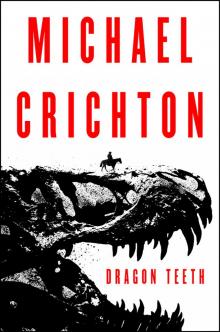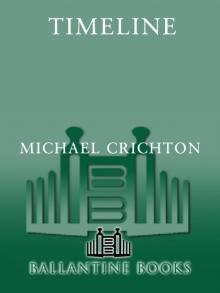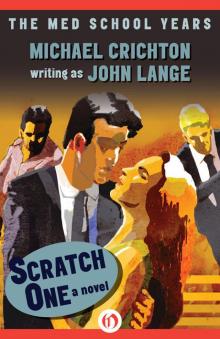- Home
- Michael Crichton
Five Patients Page 10
Five Patients Read online
Page 10
Page 10
One can argue that in the last twenty years surgical advance has been largely dependent on para-surgical innovation, more involved with what goes on outside the operating room than with what goes on inside it. The paradoxical effect of this has been to increase the range and variety of services directed toward the operating rooms. Vast areas of the hospital are now given over to support and maintenance of a heavy surgical schedule, involving more than 16,000 operations a year. Two clear examples are Central Supply and the Blood Bank.
"Central Supply" consists of a single large room located one floor above the operating rooms. As its name implies, it serves as the central supply room for the hundreds of sterilized articles required for the operating rooms, as well as the other floors, of the hospital. All sterilization is done here; forty-three people are employed to keep the room in operation around the clock, seven days a week. Its operating budget is more than $600,000 a year.
Excluding operating instruments, Central Supply stocks nearly 500 separate items. These include 44 kinds of Foley catheters, 29 kinds of drains, 10 kinds of needles, 15 kinds of sponges, and 55 kinds of "sets"-prepackaged collections of equipment used in carrying out special procedures. They range from alcohol nerve-block sets to arterial-oxygen sets to liver-biopsy sets to suture sets and venous-pressure sets. Each set is handed out, used, returned for re-sterilization and repackaging, and handed out again.
Altogether, Central Supply hands out 12,000 items a day, or nearly 4. 5 million items a year. The work of Central Supply has been increasing markedly in recent years. For example:
1966 27,000 37,000 485,000
1968 38,000 61,000 1,208,000
Hospital Use Dressing sets Suture sets Thermometers
These are real figures, in the sense that they do not represent absorption of work previously done by some other area in the last two years, but rather a simple increased demand by the hospital for these items.
It should be stated at once that Central Supply does not handle all the items now required by medical technology. For instance, the ten kinds of needles it carries do not include needles for routine intramuscular and intravenous use; these are purchased presterilized and are thrown away after use. Rather, Central Supply stocks intracardiac needles, spinal needles, sternal puncture needles, ventricular needles, and other similarly specialized nondis-posable apparatus.
The question of whether Central Supply should be doing as much as it does is the subject of debate. The cost of everything used in the hospital has grown so enormously that even the simplest details of patient care have undergone renewed scrutiny-revealing them, suddenly, as not so simple. Consider the Great Thermometer Controversy.
Thermometers were first used clinically in 1890, when they were delicate gadgets a foot long, but they are now a staple of modern care, and the largest item of business for Central Supply, which hands out between 3,000 and 4,000 thermometers a day. The MGH employs a method of reprocessing thermometers-unclean thermometers are returned to Central Supply, washed, sterilized, spun dry, and repackaged for use again.
The hospital recently commissioned a cost analysis of thermometer systems, which concluded that the average patient had 2. 5 thermometer readings a day, and a total of 32 readings during an average admission of 13 days. Within this framework, three possible systems were examined: the reusable thermometer; a disposable probe used in conjunction with a portable sensing unit; and a personal-thermometer system in which each patient is given his own thermometer at admission, and keeps it at his bedside throughout his stay.
The conclusions on cost per year were as follows:
Reprocessable, reusable $30,113. 00
Probe and sensing unit $49,786. 00
Personal thermometer $13,250. 00
This does not tell the full story, however. There are some complicating factors. First, the present MGH system is inefficient. Central Supply does not get back all the thermometers it gives out; in 1968, it spent $30,000 to replace lost thermometers, thus effectively doubling the cost of the present system. Second, the probe and sensing unit has an important front-end cost, namely the sensing units, which cost $190 each. Amortization has not been figured into the above accounting. Neither has nursing time been assessed-and the sensing units, unlike regular thermometers, are virtually instantaneous.
The situation is further confused by fear that a personal-thermometer system may not provide adequate patient safeguards. Some have envisioned a situation in which a tuberculous patient is moved to a different room, and a new patient put in his place, with the thermometer inadvertently remaining at his bedside, to be popped into the mouth of the unsuspecting new admission. The example is farfetched, but certainly any new system deserves close scrutiny to assess its reliability and safety.
The upshot of all this is that it is difficult to be certain what is the best, safest, and cheapest way to take a patients temperature. The problems in determining cost for this relatively simple matter are magnified many times when one attempts to unravel the cost of a radiological unit or a chemistry laboratory. Given the vagaries of accounting methods, and the uncertainty of reliability with different systems, it becomes extraordinarily difficult to decide which costs are justified and which are not.
The controversy rages on, but on balance the cost advantages are too great, and the potential for danger too little, to permit the hospital to disregard the personal-thermometer system. Converting to this system would save the hospital only five hun-dredths of one per cent of its annual budget. But one can see how a series of similar minor cost changes could ultimately affect total hospitaliza-tion cost.
The Blood Bank is another large and expensive facility. The MGH now has what is believed to be the largest single hospital blood bank and transfusion service in the world. Located on two floors of the Gray Building, it accounts for one fifth of all the blood used in the state of Massachusetts. The great majority of the blood goes to surgical patients, with a large proportion going to open-heart cases. At times as much as a third of all hospital blood has gone to the cardiac surgical service. This massive consumption, in turn, is largely the consequence of the heart-lung machines, which require large amounts of blood to "prime" the pump.
Although the size of the Blood Bank is closely related to the increasing demand of cardiac surgery, its growth preceded the development of open-heart techniques. The MGH Blood Bank was begun in 1942, under the part-time direction of Dr. Lamar Soutter. The hospital, skeptical of the need for such a thing, contributed $5,000 in equipment and a basement room in one of the buildings. Soutter recalls that "in the beginning everything went wrong [but] the effort paid off with unexpected rapidity. In November of 1942 the Hospital was flooded with victims of the Cocoanut Grove [fire] disaster. The Bank had more than enough plasma to give the patients adequate care. This single episode swept away the last of the opposition to the Bank and it became firmly established as a necessary part of the Hospital. "
The Bank has always operated in the black, though its operating budget has grown from $5,000 in 1942 to $144,300 in 1951, and finally to more than $1 million yearly at the present time. The staff has grown from one nurse, one technician, and a part-time physician in 1942 to more than one hundred technicians and nurses and secretaries at present.
By definition, an organ is a mass of specialized cells serving some specific function. According to this definition, blood is an organ, though one does not often think of it in this way.
As a developing organ in the embryo, blood is formed from the same tissue which also differentiates into cartilage, connective tissue, and bone. This helps explain why, for example, blood is formed in bone marrow.
In the adult man, blood consists of five quarts of liquid, accounting for 7 per cent of adult body weight. This makes it, on a weight basis, a respectably large organ-much larger than either the lungs (1 per cent) or the liver (2 per cent). The functions of blood are suitably complex, ranging from transport of oxygen and nutrien
ts to defense of the body against infection.
If blood is an organ, a blood transfusion is an organ transplantation. It is not idle to think of transfusions in this way, for nearly all the problems of modern organ transplantation were first met, and solved, in dealing with blood transfusion. Only our familiarity with modern transfusion makes us forget that it is, in fact, a transplant-a gift of vital cells from donor to recipient.
No one knows when the first transfusion was performed, but it was certainly a long time ago, for the efficacy of blood was highly regarded in ancient times. In early accounts, it is not clear whether the blood was transfused or drunk, since both methods were considered useful. Celsus, in Roman times, refers to treatment of epilepsy by drinking the hot blood from the cut throat of a gladiator. The Mongols, living in a horse culture, often drank horse blood for sustenance.
The idea of intravenous injection is also old. Ovid relates that Jason was helped by Medea with an injection of "succis" into his jugular vein.
Behind the early interest in transfusion was the quite logical notion that an illness involving blood loss was best treated with blood replacement. Early materials for this were primitive-needles made of quills and bone, tubing formed from bladders or leather. In many cases, animal blood was transfused to human beings, often with the addition of semen, urine, and other substances thought to be invigorating.
It is not surprising that patients often died from this procedure. Donors often died, as well. In a famous instance, Pope Innocent VIII received a transfusion from three young boys in 1492. The donors as well as the recipient expired within a few days.
In the eighteenth century, when better materials were available and more careful observation the rule, it became clear that certain patients benefited from transfusion but others did not. This early notion of the "transfusion reaction" evolved slowly, culminating in Karl Landsteiners discovery in 1900 of A, B, and O blood groups. This represented the first clear, unequivocal statement that all blood was not the same. For more than a decade after Landsteiners work, there was no practical clinical method of differentiating blood groups. The search for such techniques is a direct forerunner of modern tissue-typing methods for transplantation of other organs.
Just as the matching of donor and recipient was a problem, so was storage of the organ. Untreated, blood clots soon after it is drawn. It was not until 1916 that blood could be kept refrigerated for two weeks in glass bottles, with the addition of anti-coagulating substances. And it was not for more than twenty years after that that clinical blood banking began on any scale in this country. There was no important improvement in storage techniques until 1952, when glass bottles were replaced by plastic bags, which preserved blood elements much better.
More recently has come the ability to store frozen blood. This single technical capability has solved several traditional banking problems, and indeed is now integral to the MGH function: most open-heart cases are done with frozen blood [Dr. Charles Huggins, an MGH surgeon, was one of the pioneers in making frozen blood practical for clinical use].
Formerly, all blood had to be used within three weeks. Now it can be stored at -120 F. for five years or more. In the past, patients had to be matched to their own blood type. Now, the freezing-thawing process washes out serum antibodies, which means that type O frozen blood can be transfused to anyone, regardless of his blood type. The need for the bank to stock many different blood types is therefore reduced.
And, finally, there is evidence that the risk of hepatitis, a traditional problem with transfusions, is reduced when frozen blood is used.
There are, of course, some drawbacks to frozen blood. It is more expensive at the present time. Also, some blood components, notably platelets, which are important to clotting, are lost and must be supplied separately. But there are easy techniques for this.
In fact, the products of the modern blood bank are increasingly sophisticated. In 1942, the bank produced only two products-whole blood and plasma (the liquid portion without the cells). But it is now possible to give whole blood, or packed red cells without plasma, or platelets; it is possible to give plasma, or only the protein from the plasma, or only specific parts of the total protein without the others. Each of these specialized blood bank products is becoming increasingly important to the conduct of modern medicine.
What has all this meant to surgery? As it has become more scientific and more complex, a certain amount of the drama and flair, the spectacle that Warren remembered, has disappeared-or at least become muted, until it is hardly recognizable.
On Saturday mornings at the hospital, surgical clinics are held for students in which patients are presented pre-operatively and then the students are invited to watch the procedures from the several overhead viewing galleries. This teaching exercise is the last remnant of a proud tradition of surgical spectacle. Dr. E. D. Churchill, former MGH Chief of Surgery, gives the following account:
The display of operations at the Hospital on Saturday mornings continued well into the 1920s. Unusual cases were assembled so that the senior surgeons on duty could have an impressive list of operations scheduled for the amphitheater. The two services, East and West, vied with each other in trying to stage the better show. In the Surgical Building, opened in 1900, the display reached major proportions. When the mornings list was a long one, an operation would be started in a small room and then the entire outfit trundled like a troupe of gypsies into the pit of the amphitheater, where the crucial phase of the procedure was demonstrated to the visiting doctors. The surgeons would be allotted, say, fifteen minutes. Whether or not the operation had been completed, at the expiration of the allotted time the tents were folded, the troupe moved off stage to complete the operation elsewhere, and a new act took over. . . Great weight was placed on the speed and daring of the operator. . . Tension mounted when some prima donna showed reluctance to withdraw from the spotlight and overstayed his time to hold the audience spellbound in an ad lib recounting of his surgical prowess.
The prowess of the surgeon has steadily increased since then, to the point where reconstructing a nearly severed hand is, if not commonplace, at least nothing to get very excited about.

 Dragon Teeth
Dragon Teeth Jurassic Park
Jurassic Park Micro
Micro The Great Train Robbery
The Great Train Robbery The Andromeda Strain
The Andromeda Strain The Lost World
The Lost World Congo
Congo Travels
Travels Timeline
Timeline Sphere
Sphere Westworld
Westworld Prey
Prey State Of Fear
State Of Fear Next
Next Disclosure
Disclosure Pirate Latitudes
Pirate Latitudes The Terminal Man
The Terminal Man Five Patients
Five Patients Rising Sun
Rising Sun Binary
Binary The Andromeda Evolution
The Andromeda Evolution Airframe
Airframe Easy Go
Easy Go Drug of Choice
Drug of Choice Odds On: A Novel
Odds On: A Novel Scratch One
Scratch One Dealing or The Berkeley-to-Boston Forty-Brick Lost-Bag Blues
Dealing or The Berkeley-to-Boston Forty-Brick Lost-Bag Blues Venom Business
Venom Business Grave Descend
Grave Descend Gold - Pirate Latitudes
Gold - Pirate Latitudes Binary: A Novel
Binary: A Novel Zero Cool
Zero Cool Delos 1 - Westworld
Delos 1 - Westworld